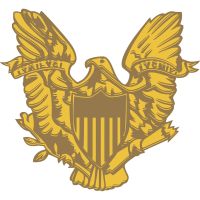The 1933 Double Eagle Gold Coin: A Modern Treasure with an Intriguing Heritage
Infused with an abundance of mystery and known to collectors as one of the most intriguing gold coins in the world, the famed 1933 Saint-Gaudens $20 double eagle has a storied past that is entwined with drama, courtroom battles, greed -- and the quest to unearth hidden stashes of these precious pieces of minted metal.
The 1933 double eagle coin was never officially released into circulation and still considered the pinnacle of gold coins by most avid collectors. Over the years, the coin and its complex lore have been written about extensively, as the main focus of a number of books, magazines and newspaper articles. It was also the recent topic of a documentary produced by the Smithsonian Institute, called the Hunt for the Double Eagle that highlights the coin’s historical significance in a short film.
In addition, the notorious coin has been the subject of many industry blogs, such as Coin World, and also had a recent cameo appearance in the 2012 season of the American TV series, The Closer.
The Story Behind the 1933 Double Eagle Coin
First struck in 1907, the Saint-Gaudens $20 dollar double eagle gold coin is viewed by enthusiasts as an authentic work of art. Often referred to as one of the most beautiful coins ever created, it was designed by renowned American sculptor Augustus Saint-Gaudens, who created the detailed images to symbolize United States freedom and power. The coin is 34.1 mm in diameter, a thickness of 2 mm, and features a composition of 90 percent gold and 10 percent copper.
On the obverse side, it features a depiction of "Lady Liberty" dressed in a flowing robe while holding a torch and olive branch. Rays of light, signifying the “Glory of God” are shown radiating from the background, while the world “Liberty” stretches above the design. The reverse side features a bald eagle in flight above the rising sun, and the inscription, “United States of America” and “Twenty Dollars” across the top.
1933: The Executive Order That Changed Gold
The coin was regularly minted and available for about forty years -- until April 5, 1933. At that time, President Franklin D. Roosevelt officially halted the coin’s production, in an effort to stop the US banking crisis. He issued Executive Order Number 6102, which banned “the hoarding of gold coins, gold bullion and gold certificates within the continental United States.”
The order required U.S. citizens to surrender most gold coins, along with gold bullion and gold certificates to a Federal Reserve Bank (or a branch of the Federal Reserve Bank) by May 1, 1933. The order allowed individuals to keep up to $100 in gold coins, while collectible coins were exempted.
Why Some 1933 Double Eagles Were Minted
However, before the executive order was signed and made official, the United States Mint in Philadelphia had struck nearly half a million of the 1933 Double Eagles.
According to historical records, the first 100,000 coins were struck between March 15 and March 24; 200,000 additional coins were struck between April 7 and April 27, and 145,500 more were struck between May 8 and May 19 of that year. None of these Double Eagle coins were officially released into circulation, yet somehow some ended up in private collections and/or were hidden away, igniting the coin’s legendary status.
How Some Double Eagle Coins Flew the Coop
Although the coins were not legally released, the 1933 Double Eagles were not all immediately destroyed either.
In February 1934, the U.S. Assay Commission met in Philadelphia and examined 1933 gold double eagles (as well as other coins). Also during that time frame, there was some ambiguity surrounding the coin. Apparently, it was not made clear to the public that 1933 double eagles were illegal to own.
In fact, it was fairly common for the mint to exchange new coins for older ones. Eventually, by the Fall of 1934, all the gold coins remaining at the mint were melted into gold bars.
The Coinage Act of 1965: A Turning Point for Gold
Thirty years later, all $20 double eagles were legalized through the Coinage Act of 1965. Not surprisingly, the 1933 double eagles were quickly considered to be extremely rare and alleged sightings of the coin started to appear in various places.
For example, the April 1937 issue of The Numismatist shows F.C.C. Boyd as acquiring the 1933 double eagle (and a 1933 eagle); and the May 1937 issue featured an advertisement seeking 1931, 1932 and 1933 double eagles. Notable numismatists who specialized in double eagles in the 1930s and 1940s included: B. Max Mehl, Abe Kosoff, and Israel Switt, a dealer from Philadelphia whose descendants would later be the center of a legal battle involving these coins.
King Farouk’s Lost Double Eagle Treasure
As the notoriety of the coin continued to gain momentum, the U.S. Mint became aware that the 1933 coins were still in existence. One of the most well-known events was when King Farouk of Egypt purchased a coin in 1944, which was given an export license granted by the United States Treasury Department. The purchase was the catalyst for the Secret Service to start actively investigating the coins further, as the organization suspected that a number of them had potentially left the mint under illegal circumstances. Once the owners were located, the Secret Service demanded that they turn them into the government.
Farouk’s 1933 double eagle embarked on an unexpected journey of its own, as it disappeared and then reappeared about four decades later in New York. Apparently, a dealer from England, Stephen Fenton had purchased it in 1995 in London. The following year he was arrested, along with Kansas City dealer Jay Parrino as they tried to sell the coin.
During litigation, it was decided that the coin was originally Farouk’s and the Treasury Department agreed to divide the proceeds between Fenton and the U.S. Mint Public Enterprise Fund. It sold at a Sotheby’s auction on July 30, 2002, for the price of $7,590,020. This purchase price broke the former record of $4 million that was paid for a silver dollar from 1804. This piece is the only 1933 double eagle that the U.S. government has legalized for private ownership.
Today, the buyer is still unknown, and the coin has been on public display at venues including the New York Historical Society’s display entitled, “The World’s Most Valuable Coin: The Unique United States 1933 Double Eagle.” In addition, two double eagle coins are located in the National Numismatic Collection within the Smithsonian Institution in Washington, DC, where an example is often on public display.
Double Eagle Coins: A Tale of Mystery & Intrigue
The coin’s legendary reputation continued into recent years, and one of the most impactful court cases in current history took place in Philadelphia. In 2003, Joan Langbord, the daughter of jeweler Israel Switt, found ten 1933 Double Eagle coins in a family safe deposit box.
These rare coins were obviously linked to her father’s business, as Israel Switt frequently dealt with the mint in the 1930s. Over the years in fact, he had been investigated regarding his coins. During this courtroom drama, the U.S. Department of the Treasury claimed the coins were stolen and the government won the legal case in 2011. However, the Third Circuit court overturned the verdict in 2015, stating that the coins were obtained legally. Langbord, along with her two sons were awarded the rights to all of the ten gold coins – estimated to be worth approximately $80 million.
The captivating story of these double eagle coins continues to attract attention from avid collectors as well as those interested in learning about specific events that have shaped historical elements within the U.S. Experts agree that the legendary coin combines beauty, mystery and extreme wealth – and continues to be one of the most intriguing gold pieces in history.









